
Laviduce
-
Posts
266 -
Joined
-
Last visited
-
Days Won
8
Content Type
Profiles
Forums
Blogs
Gallery
Downloads
Events
Posts posted by Laviduce
-
-
39 minutes ago, Pardus said:
Thanks Laviduce!
I am wondering how they arrived at the 70mm front turret roof? A leopard crew memeber said it was a 70mm slab of RHA stretching up until around the commander & loaders hatch. And the guy at narod.ru apparently measured it at that thickness too?
In the tank he measured there doesn't appear to be a spall liner there:
Would be nice to get that one cleared up.
You are welcome. I am getting the impression that the area in question might have been thickened in parts in the Leopard 2A5 and later models. Three deflector plates in front of the loaders periscope are clearly visible.
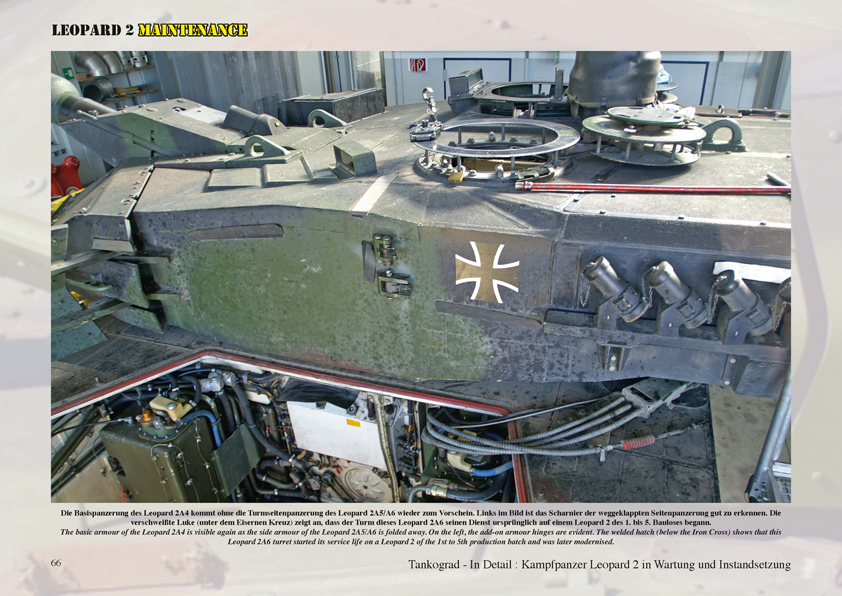
-
Do we get any information from the document about the actual Type 10 protection levels ?
-
54 minutes ago, Pardus said:
Hello guys, came over from the WT forums after I stumbled upon this site via google whilst searching for material on the Leopard 2 MBT.
I have some questions regarding the top armor of the Leopard, and I created this color map in order to split up each section:
My questions are:
a) did I section things correctly
b) what are the correct thickness values for each section
I read that the front part of the turret roof is 70mm thick angled at 7 deg over at narod.ru and by a former Leo crew member. Furthermore I can visibly see that the upper front hull is some ~10mm thicker than the 30mm thick drivers hatch.
Thanks!
a) I think the boundary of the green/yellow line should be at the Peri R17 level.
b) From a properly scaled Rolf Hilmes Leopard 2 cross section i get the following:
green: 40-45 mm max. I seriously do not understand how they can get 70 mm unless they include the spall liner on later Leopard 2s
orange: 15-20 mm. 20 mm was outlined in design change documents of the Leopard 2AV, IIRC.
red: up to 40 mm
yellow: 30 mm
cyan: 10 mm ? Looks really thin, does not show up well in the drawing for measurement.
yellow: 30 mm max.
Also, the turret bustle bottom seems to be 20 mm thick.
-
4 hours ago, Wiedzmin said:
if you take a closer look at the measurements of mantlet done by Militarysta, you will understand that there is no 420, or 400, or even 390mm in it for example...
As far as i could see, the length of the upper part of the mantlet is about 510 mm, including the overhang. The maximum thickness from the front to the back seems to be 420 mm not including the overhang.
-
3 hours ago, SH_MM said:
Already adressed in other discussions. The conclusion is rather simple: it's not a reliable source, given the various incorrect statements in the article.
As for your new protection estimate: that doesn't fit to the armor coverage. If ~19% of the total frontal surface should have at least 400 mm protection, then you cannot remove half of the area with this protection level from the previous model. That the right side of the turret is better protected is hardly a suprise given that the armor there is thicker and the armor block behind the EMES-15 will result in a much higher LOS path for flank shots hitting the upper half of the turret.
Thank you for the feedback! What do you mean by this statement? It does not seem that i removed that much from my previous model. I just balanced the greater KE resistance to the other turret face given what we currently know , more or less.
-
-
Diagram from an Aselsan research paper dealing with gun tube vibrations (https://www.sciencedirect.com/science/article/pii/S2214914716301234?via%3Dihub):

-
-
1 hour ago, SH_MM said:
It is worth nothing that other German authors (like Lobitz) claim that the 8th batch already got D-technology armor (at least in certain spots like the light side skirts). That would alsoo explain why a graphic from the Swedish documents shows the third generation armor being used since 1991:
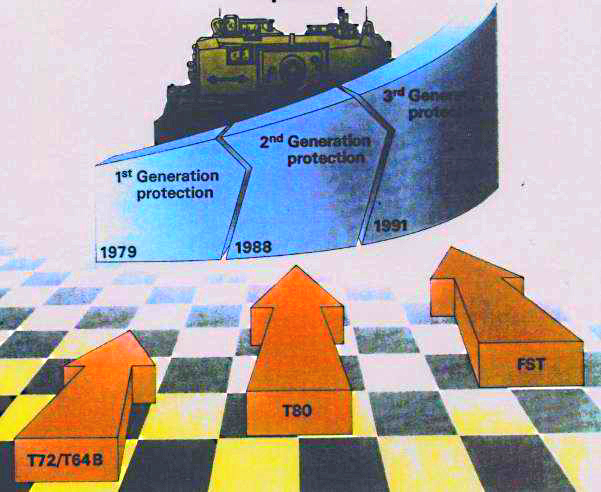
(The eight batch was made between January 1991 and March 1992. The final tank was handed over to the German army on the 19th of March).
Yes, i read about that too. Spielberger also talked about those D-technology based side skirts but i never had anyone go any deeper into the subject matter than Hilmes. Looking at the chart I also think it is possible that D technology Leopard 2A4 turrets were produced that early (1991-1992).
On the other hand, this diagram could just have been part of the Krauss Maffei information brochures sent to Sweden after the request-for-information (RFI) was sent to Germany in November of 1991. Answers were received no later than March 1992. This image might actually show a projected introduction of the 3rd generation armor package in response to the future soviet tank (FST->T-90).
-
-
-
On 5/25/2018 at 10:18 AM, Mighty_Zuk said:
-snip-
EDIT: Party's over folks. Mil censorship got me. Tell my family I love them.
You will be remembered! R.I.P.
-
I have 4 questions:
1) Where is the Leclerc's electric turret traverse mechanism located in the turret?
2) Where is the Leclerc's gun elevation mechanism located in the turret ?
3) How is the HL-60 gunner sight mechanically linked to the optics of the gunner? It seems the entire HL-60 sight moves with the gun up and down.
4) What is the diameter of the turret basket?

It seems to me that the dark blue and the yellow box next to the ER315 radio have somethign to do with the turret traverse. I have no idea where the gn elevation mechanism is.
I would appreciate any pictures and/or feedback that would answer the questions! Thank you in advance.
-
On 5/7/2018 at 12:02 PM, SH_MM said:
According to the following drawing, the gun mantlet armor is actually a lot thinner, because the 420 mm thickness are also the trunnion of the main gun!


The Type 90 tank seems to be rather poorly protected.
The mantlet drawing in the first image must be wrong. The vertical movement axis seems to be further back. The 420 mm that i got are maximum values. My first estimate for the actual mantlet not including the trunnion was around 380-400 mm. I was told that the mantlet was thicker than that. I will not name names.
Also the mantlet in your image that is labelled as ~200 mm should be more like 270-280 mm. The part labelled as trunnion? is about 260 mm thick. This would give us LOS thickness of about 540 mm.
After having taken a closer look at the mantlet setups on the Leopard 2 and Leclerc tanks, i have come to the conclusion that the trunnion of the Type 90 could be located right above the turret ring edge.
If we have position the 200 mm thick trunnion block according to the available drawings and models (i.e.Tamiya), this would leave us with about 390 mm of space to work with for the actual trunnion thickness. I will make the changes.
--------------------------------------------------------------
Small update with change:

-
5 hours ago, SH_MM said:

(posted by Wiedzmin on the Tank-Net)
The Challenger 1 has enough armor to stop a 125 mm APFSDS at about 1,000 metres distance. Given that the British estimated a penetration performance of 475 mm steel armor at 0 metres for a 125 mm tungsten-cored APFSDS round, it seems likely that the Challenger 1 has 400-450 mm protection vs KE; this also would match the statement that the Challenger 1 has protection roughly equal to a T-64BV, T-72AV or T-80BV tank.
The Challenger 2 design - not necessarily identical to the production model - at some point of time was to have improved hull armor; there is no mention of upgraded turret armor (at that time).
That leads to:
- XM1 Abrams - resists 115 mm APFSDS at 800 - 1,200 metres (official requirement), penetrated by 125 mm APFSDS even at 4,000 metres (British claims)
- Leopard 2 - turret resists 115 mm APFSDS at 1,000 metres & 125 mm APFSDS at 1,500 metres (Swiss estimates)
- Challenger 1 - turret resists 125 mm APFSDS at 1,000 metres, hull weaker
- Challenger 2 - turret and hull resist 125 mm APFSDS at 1,000 metres (design specifications)
- Chieftain with Stillbrew - turret resists 105 mm APFSDS point blank and 120 mm APFSDS at 1,000 metres
Thank you for your response, I appreciate the effort. I hope more information gets released and found. It seems quite a few tanks protection capabilities have been overhyped.
This makes me believe that the protection requirement estimates in the Chieftain book by Richard Taylor are referring to the protection offered at 1000m and not point blank range.
Questions:
1) At what distance does the Challenger 2 turret (cheeks?) and glacis offer protection against the 125 mm rounds of the T-72? Is it at 1000m and above or at point blank distances? In the image i could not see the distance given for the Challenger 2.
2) From what document does this information come from?
3) How old is this document?
-
-
-
On 14.4.2018 at 3:52 PM, Wiedzmin said:
Laviduce, about your scheme with 80mm at bustle turret side, Leopard-2 never had plates thicker than 45mm, and turret side - spaced armor with 90mm LOS, not 80mm RHA plate, if you do not believe me, you can knock this part in some museum with your fist (of course, if you do not have the opportunity to use USG) and realize how thin the outer plate is there, main requirement for turret bustle side spaced armor - protection from 14,5mm and 20mm, thats all.
and of course turret roof have only 40 and 20mm plates, not 70...
I thought so too. My original believe was that it has a LOS thickness of about 60 mm: "The bustle rack side armor seems to be spaced and around 60-70 mm thick. (1 Possible solution: 35 mm steel-10 mm air gap + 15 mm steel). "
I was not sure if the outer shell was the thinner or thicker plate.
But then an Ex Leopard 2A4 tanker had this to say: " It is around 80-85mm with air gap inside not thicker than 15mm,..."
Concerning the roof, I was getting ready to set the roof thickness at 30 mm where the hatches are and about 45 mm where the sloped front roof is. In the Hilmes diagrams it looks like that part is about 40-45 mm thick, so i was thinking about going with the 45 mm.
Also the Swiss archives had to this to say about the Leopard 2 documents:
"Experience shows that about 85-90% of the requests for insight are granted (viewed as a whole). Therefore, I could well imagine that your application would be approved accordingly.
The term of protection for these documents is 80 years. This means that you will be freely accessible from the year 2063. I suspect that this takes too long.
However, you are welcome to submit an application for access to these three dossiers at www.swiss-archives.ch. The processing of such an application usually takes 4-6 weeks. Any authorization is then valid for life." -
Will anyone hold these aggressors responsible or will they get a pass again ? The US and their vassals are acting like a collective Hitler, totally out-of-control.
-
1 hour ago, LoooSeR said:
Hold on US, E-Stonia is coming to help you!
The governments of these baltic countries remind me of those countries that aligned themselves with Nazi Germany during WW2. They seem to sell themselves to anyone just to get revenge. I wonder if these governments (butthurt troublemakers)will still be so enthusiastic and confrontational if push comes to shove.
-
5 hours ago, LoooSeR said:

Outrageous !
-
5 hours ago, SH_MM said:
Apparently the frontal turret armor modules fitted to the Leopard 2A4M CAN are empty and consists of a single armor plate (might be NERA, but I don't see any of the bolts as usually found on the Leopard 2A5's frontal heavy NERA sandwich plates). The description of these photos claims that additional armor can be internally mounted, however there are no signs of attachment points for this.


Leopard 2A5DK damaged by an IED in Afghanistan:

As I previously wrote, he said "not equal", which doesn't mean that the frontal armor protecttion is lower; given that the Abrams has more side armor (more area is covered by the heavy side skirt modules and the turret bustle is fitted with thick composite armor), the quote from Spielberger doesn't need to have any relation to frontal armor protection. I don't see this quote disagreeing with what I wrote earlier.
The documents in the Swiss archives are not available to the public yet, see the column "Zugänglichkeit gemäss BGA: In Schutzfrist". However the titles of the document also confirm that the AMX-32, Merkava and the Challenger 1 were considered as optiopns at one point of time.
"...doesn't mean that the frontal armor protecttion is lower; given that the Abrams has more side armor..." I concur!
Concerning the M1 Abrams vs Leopard 2A1 protection question, I was somewhat confused about the comment by Spielberger. Looking at my protection solution of the Leopard 2A1 and the estimates of the M1 Abrams it seems that the turret front of the Leopard 2 might actually be better protected against KE (and maybe CE) rounds compared to the M1. The front hull of the M1 seems to be better protected than the Leopard 2. The side turret of the M1 is better protected compared to the Leopard 2 for somewhat obvious reasons. Reading the Spielberger comment I always assumed that all aspects of both the turret and the hull of the Leopard 2 were not as good protected compared to the M1. I never considered that the protection difference issue might be a bit more complex than that.
Also, according to the Archives the documents in Schutzfrist could be cleared for access if requested in about 4 to 6 weeks. They will let me know further details.
-
51 minutes ago, Mighty_Zuk said:
How did they even make up these numbers? Some of them seem to be correct, or at least not too far fetched, but many seem to be exaggerated intentionally.
As mentioned on the site; the information comes from "... posts on Tanknet the premier source of tank discussion online. Also from Stephen Zaloga's various works on Russian MBTs, GSPO forum, Hilmes' books, Hunnicutt Patton and Abrams, Janes IDR and the NII Stali website. "
Some of the values shown on the site do correspond to values revealed in recent documents, while others are rather more questionable (e.g.: Challenger 1 Lower hull front of Mk1/3 version had ERA = 520mm KE).
-
1 hour ago, SH_MM said:
-snip-
Well, this is very interesting and also would explain why the British FVRDE assumed that the Chieftain with add-on armor was better protected than the Leopard 2 at the turret front.
However there seem to be some questionable statements:
- the author states that the the "bulge" created by the mantletless turret design has a thickness of 500 mm. This seems to be only the case when directly hitting the edges; it has been stated by other sources that the thickness is only about 300 mm.
- the author ignores the differences in armor protection provided by cast steel and rolled armor steel. According to British sources, the hardness of the cast steel was only 260 to 280 BHN, which is the same as Soviet cast steel. The Soviets found that ~260-280 BHN cast steel offered between 5 to 15% less protection than rolled steel with a hardness of 350 BHN (as used for the hulls of T-54, T-55, T-62 and later tanks).
- the glacis plate is not effectively 388 mm thick; maybe it is a type and was meant to be 288 mm, which be roughly maximum protection level of the hull front; however it seems more likley that the author just copied the false value from Wikipedia. Measurements on the real tank with an ultra-sonic probe have shown a hull armor thickness ranging from 80 to 89 mm, which would be 259 to 288 mm along the line of sight. The British requirement as found in declassified documents asked for 120 mm at 60° (240 mm LOS); ~84 mm at 72° was believed to provide equivalent protection.
As for the Challenger 1's armor: 500 mm steel-equivalent protection might be possible, given the date of introduction and its huge weight, but it certainly is not set in stone. Confirmed is that the Shir (Iran) 2, which was used to develop the Challenger 1 tank, had a protection level of 325 mm along the 30° frontal arc (?) in 1978. Given the power-to-weight ratio listed in the British documents, the Shir (Iran) 2 tank weighed 63 to 64 metric tons, just as much as the Challenger 1. In so far the British engineers would have needed to completely redesign the armor array to reach the desired level of protection. In 1978, a protection level of 435 mm vs KE (as achieved on the MBT-80) was considered to be "enough". Originally the Shir (Iran) 2 was to be delivered in 1979 and 1980; but the deal was canceled with the Iranian revolution of 1979. The decision to not continue the development of the MBT-80 was made in July of 1980, the first Challenger 1 pre-series vehicles were delivered in 1982; so if the armor was massively redesign, it must have been done in a rather short period of time... so it remains questionable how much changes were made.
As for the "engineer rumor": Given the source of this rumor, I would completely discard it until another source supports it.
Based on drawings of the Challenger 1 tank, the frontal turret armor modules are sloped at 26-28°, but the turret front of the M1A1 HA is sloped at 28° (in front of the gunner's sight) and 36° (in front of the loader's place) - that means that the gain in protection when attacking at 0° instead of 30° from the turret centerline is different (i.e. the left turret front module of the M1A1 HA would gain less additional protection compared to the right turret front module), which complicates the matter. Also note that modern armor arrays thanks to including NERA sandwiches as well as potentially certain materials like glass and ceramics do not provide the same amount of efficiency at all angles. The armor could be designed to provide maximum efficiency when being hit at 30°, thus the protection could be a lot more homogenous along the frontal arc.
-snip-
With the CR1 protection numbers, I personally did not believe the "engineer rumor" myself. I just did not believe that British could compose an armor array that would offer a superior armor efficiency compared to their US and German counterparts.
There are quite a few issues:
1) The British are aware of the threat the 125 mm guns pose by no later than 1981.
2) The armor array of the Challenger 1 was never upgraded as far as i know while it was in service (1983-1997).
If these two statements are true we need to ask the following question:
If the Challenger 1 turret offers a similar protection level like their German and US counterparts, why were the armor packages of the Challenger 1 never replaced while in service ?
The British thought it was necessary to up-armour their Chieftains but they did not find it necessary to up-armor their Challenger 1s by replacing the old armor packages with new ones?
Either the armor package was replaced or the original armor package was considered adequate enough to already offer enough protection to deal with the 125 mm ammunition.
I really wonder where the Armed Forces Journal Author got his numbers from.
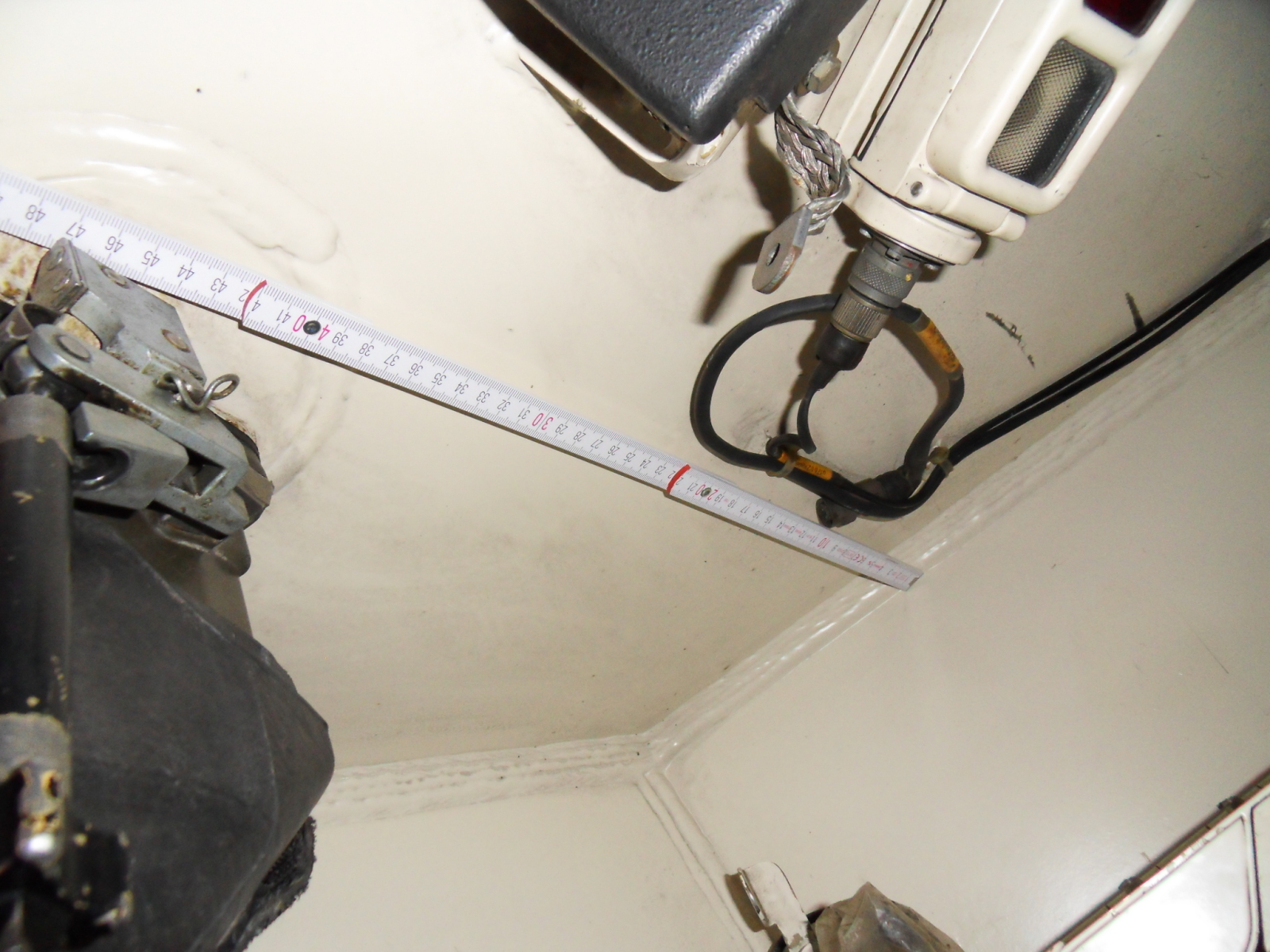

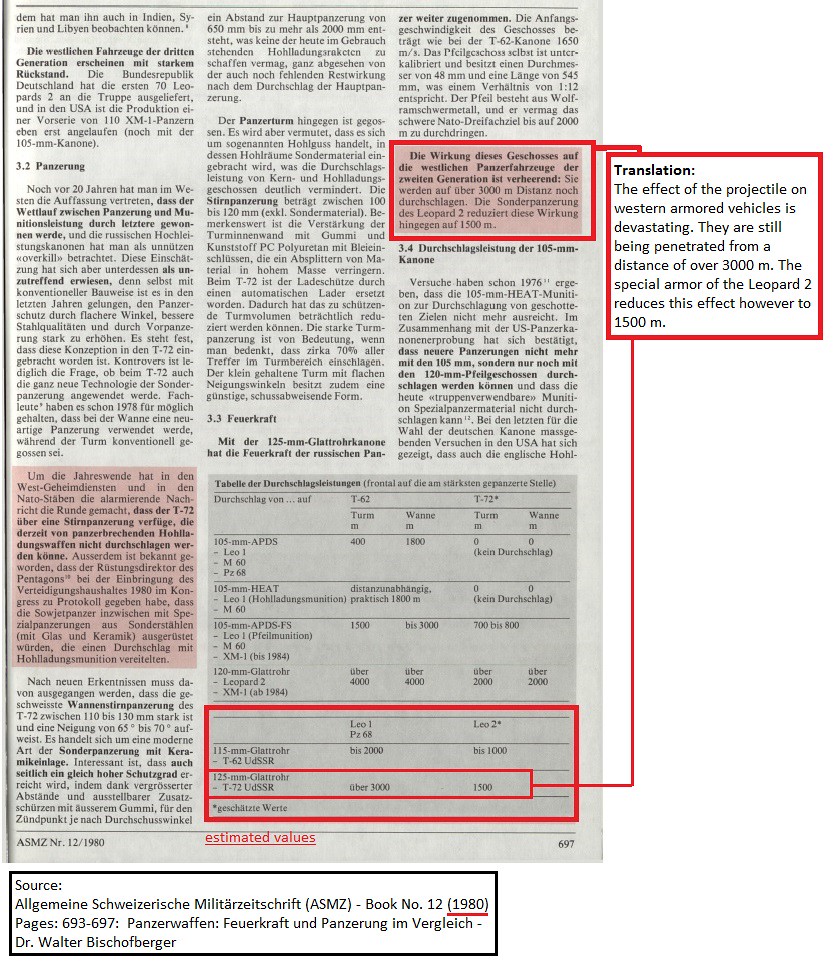
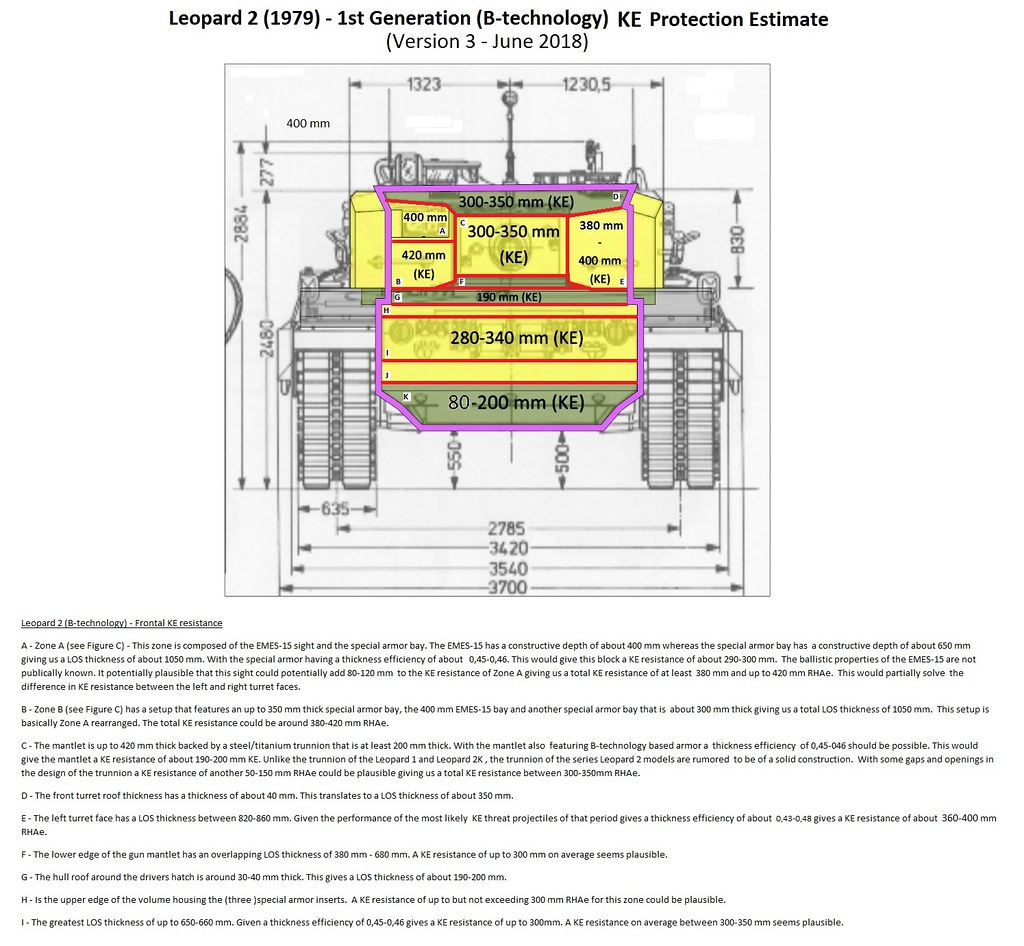
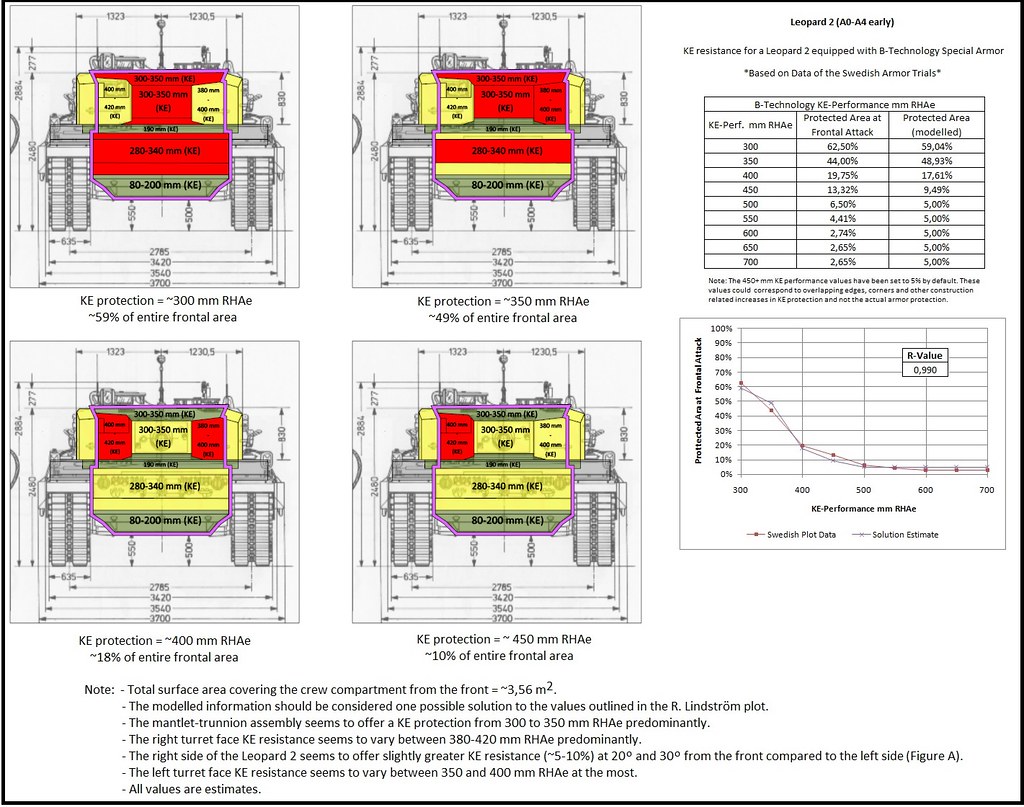
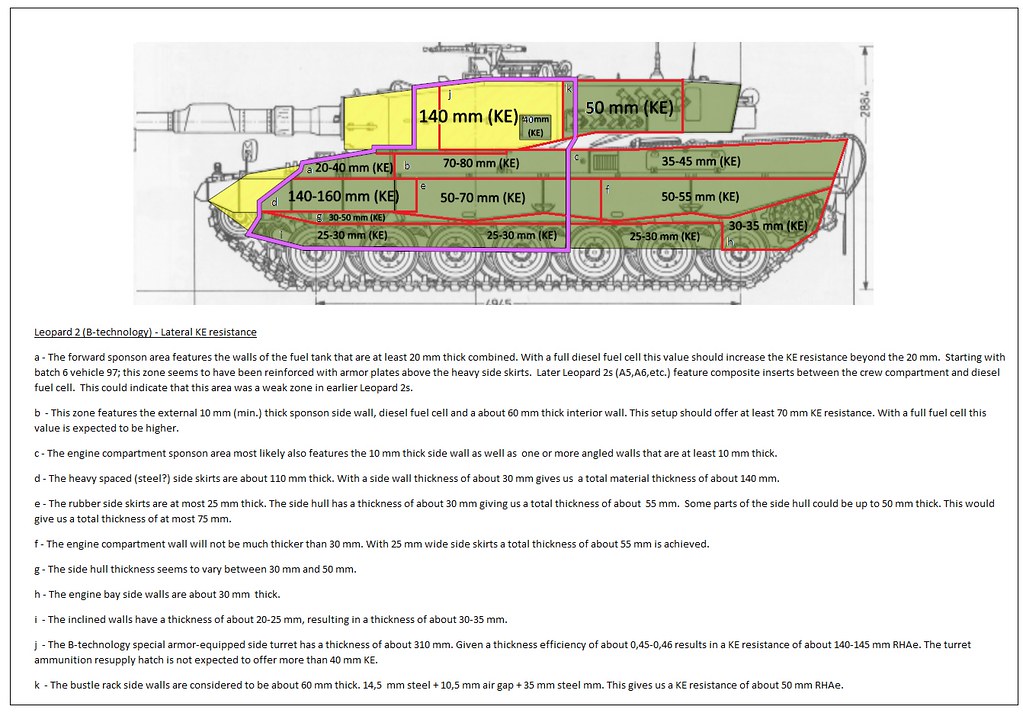
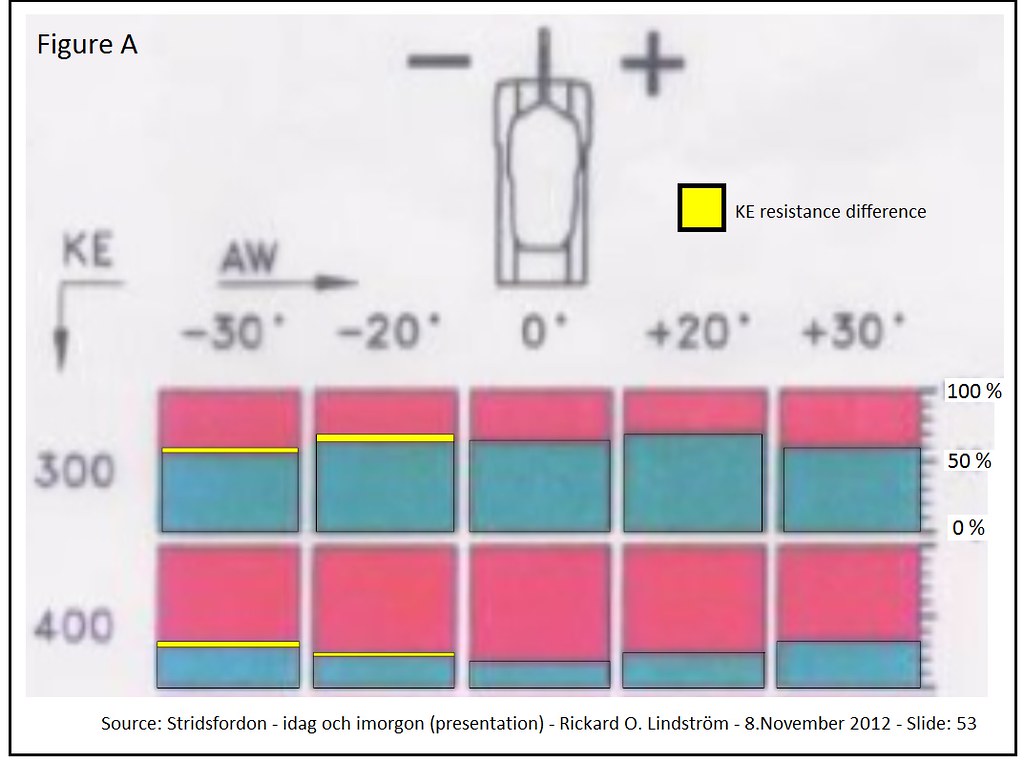
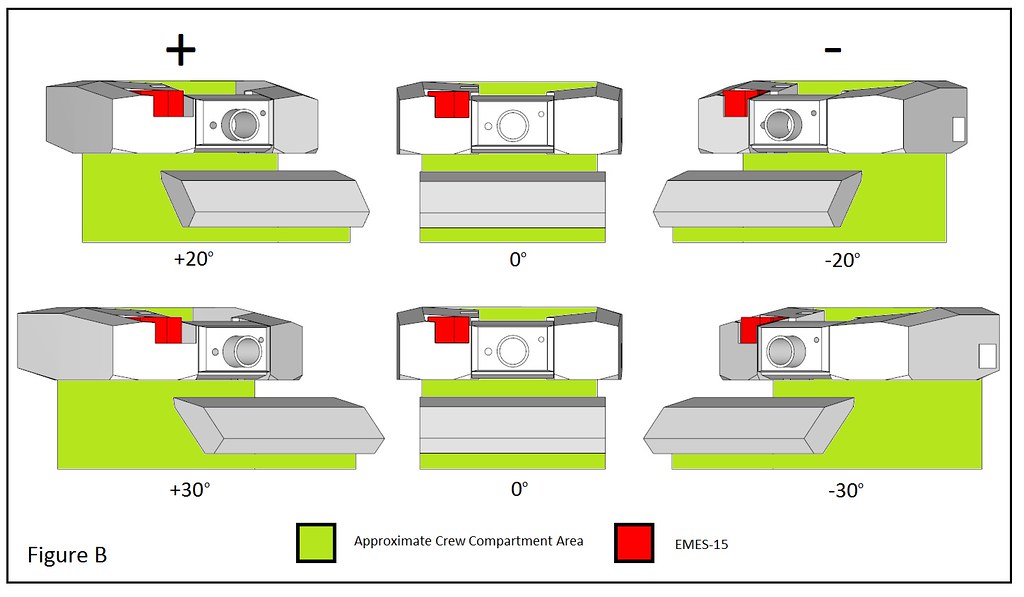
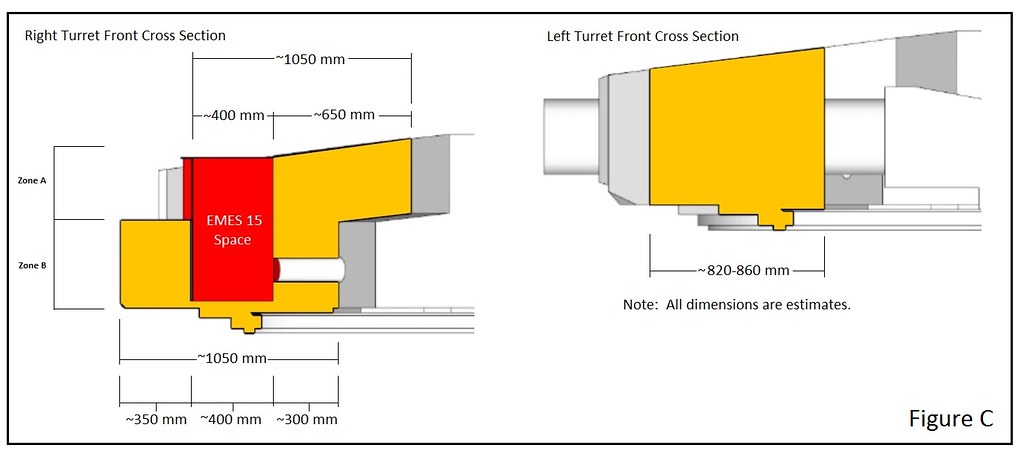

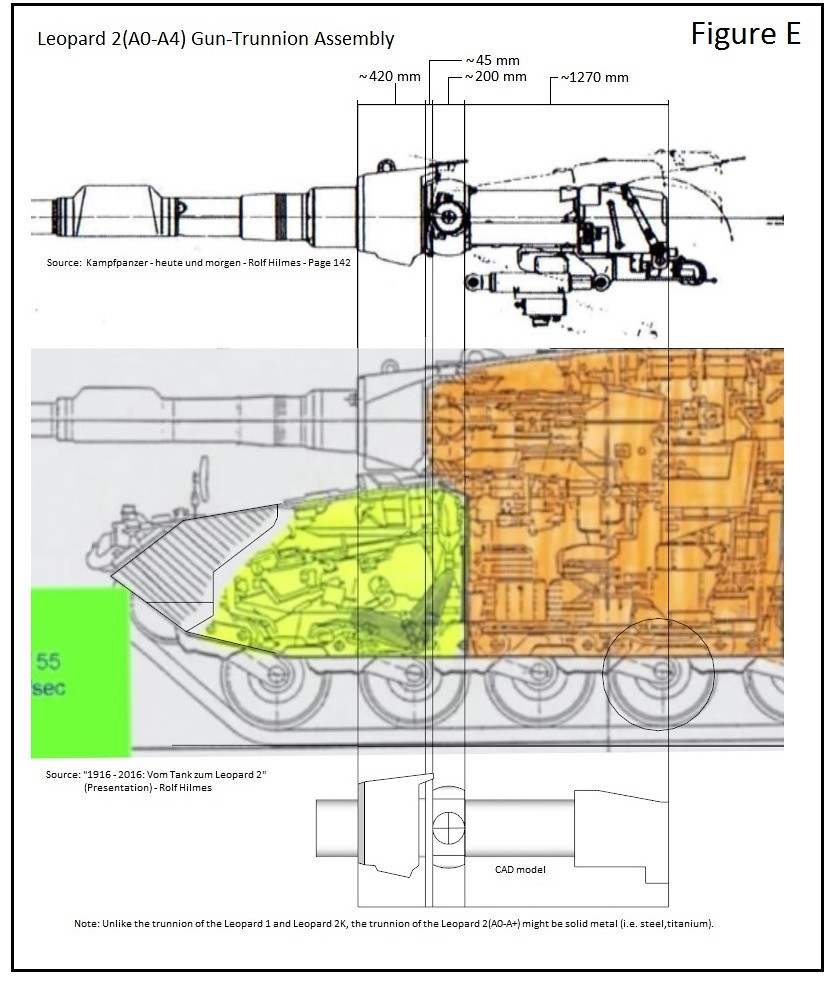

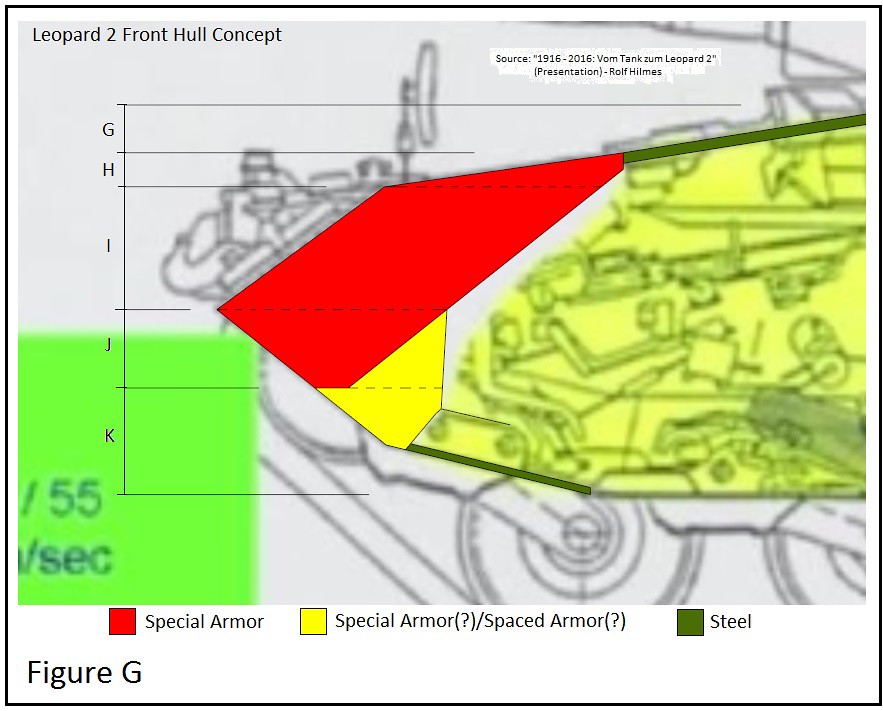
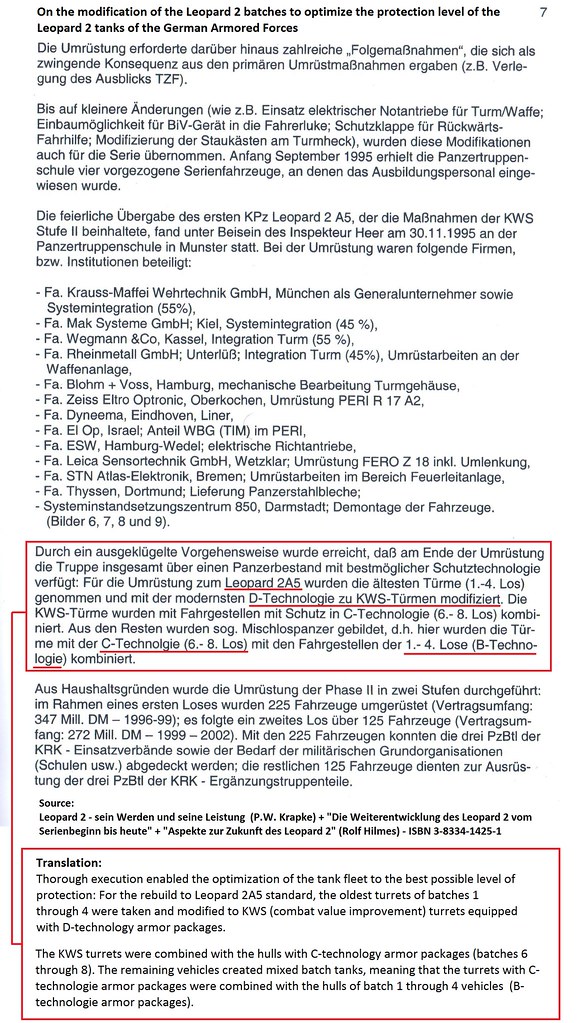





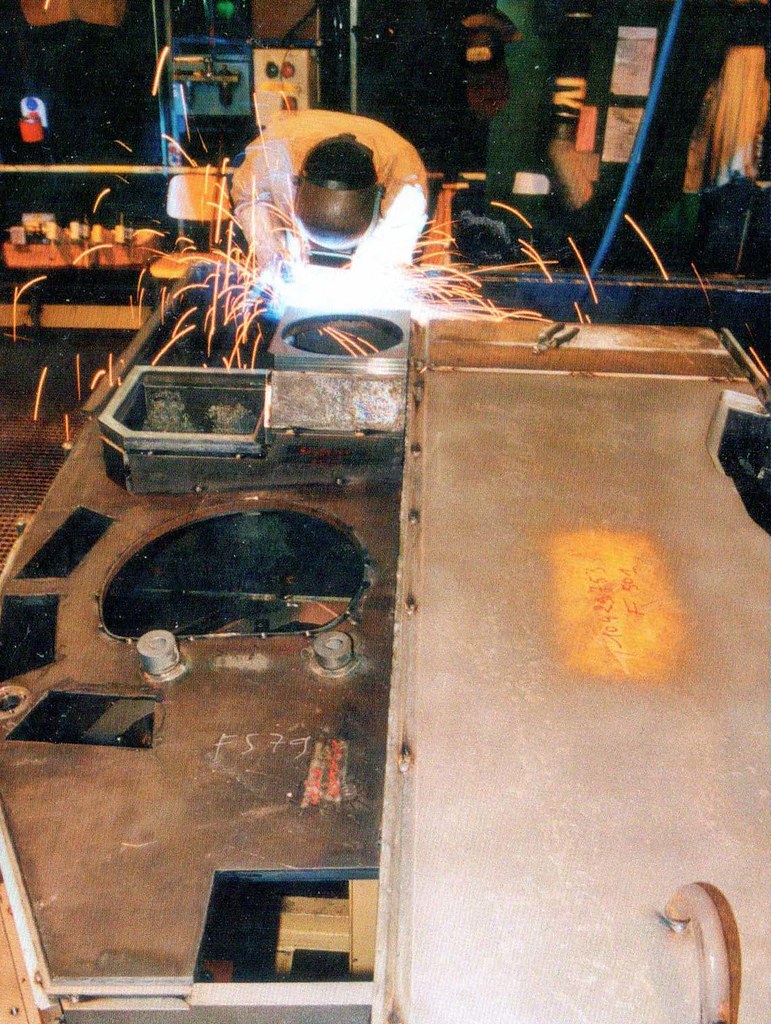
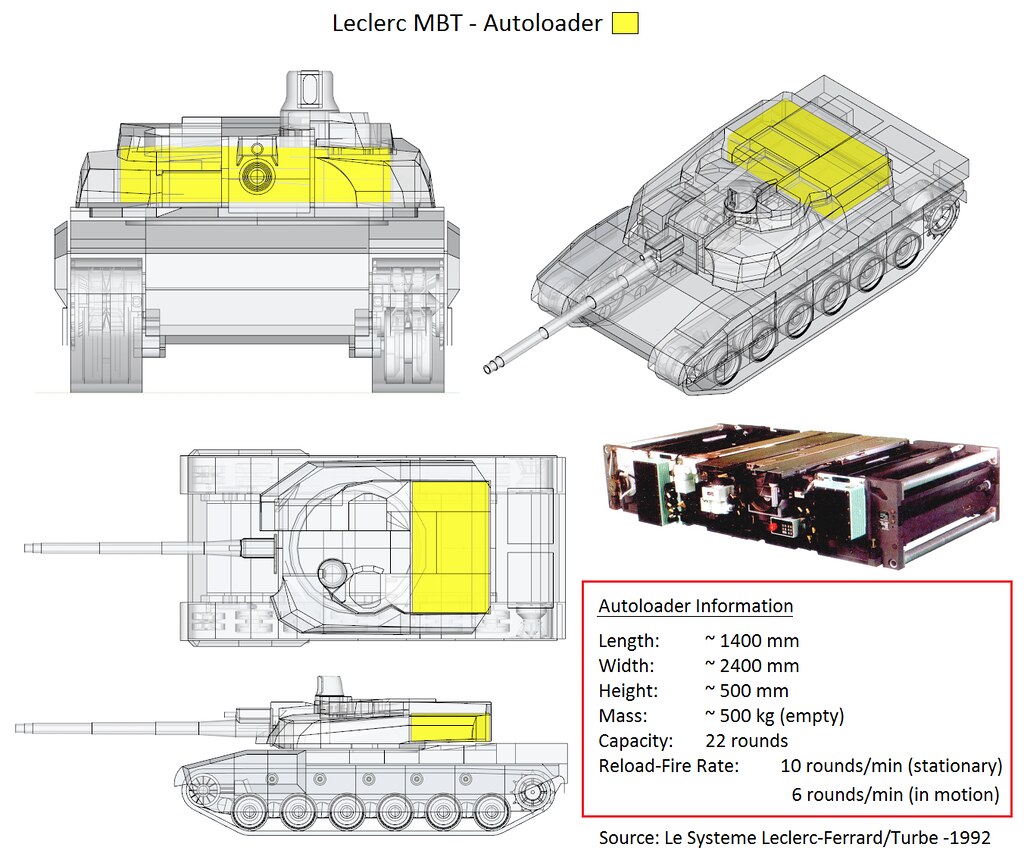
The Leopard 2 Thread
in Mechanized Warfare
Posted
I am not totally sure why there is such a significant discrepancy (40-45 mm vs. 70mm). I made a serious effort to properly scale the drawings. Concerning the turret ring guard, it should make a small but at least somewhat noticeable difference.
Also, has anyone figured out how and where the side turret special armor inserts terminate ?